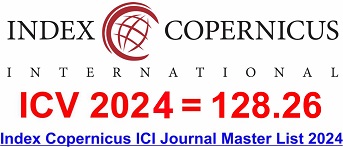Nursing-Sensitive Quality Indicators and Related Factors for Patients at Intensive Care Units in Port Said City, Egypt
DOI:
https://doi.org/10.31674/mjn.2024.v16isupp1.001Abstract
Background: Nursing-sensitive quality indicators (NSQIs) are critical in evaluating the quality of care specific to nursing practice aligned with Egypt's health sector vision 2030. Research on NSQIs potentially improves nursing practice, either directly or indirectly. This study aimed to explore the prevalence of nursing-sensitive quality indicators and related factors for patients at intensive care units in Port Said City, Egypt. Methods: A cross-sectional design was used. Utilising two samples: the first was a convenience sample of 150 patients, while the second was all nurses (150), which provided care for adult intensive care patients at hospitals affiliated with the Egypt Health Care Authority Hospitals in Port Said City. Using two tools, the modified nursing sensitive quality indicators questionnaire was used to assess nurses’ awareness of quality-sensitive nursing indicators. The second tool was the physical examination tool, which was used to assess patients for signs and symptoms of several quality-sensitive indicators by nurses. Results: The most common sensitive nursing quality indicator was falls (45.3%), followed by peripheral infiltration (28.7%) and urinary infection (26.9%). However, the mean total nurses’ awareness score for the sensitive nursing quality indicators was 222.33±40.66. There is a significant relationship between total nurses’ level of awareness about sensitive nursing quality indicators and urinary catheter-related urinary tract infection manifestations. However, patient gender was significantly related to restraint prevalence, and fall occurrence was significantly related to patient income. Conclusion: Falls was the greatest known sensitive nursing quality indicator followed by peripheral infiltration and urinary infection. However, a regular follow-up regarding nursing-sensitive quality indicators, the employment of updated awareness sessions for nurses about quality indicators and considering the high prevalence of patient outcome indicators are recommended.
Keywords:
Intensive Care Unit, Nursing Sensitive Quality Indicators, Patient, PrevalenceDownloads
References
Afaneh, T., Abu-Moghli, F., & Ahmad, M. (2021). Nursing-sensitive indicators: A concept analysis. Nursing Management, 28(3), 28–33. https://doi.org/10.7748/nm.2021.e1982
Agency for Healthcare Research and Quality. (2003). Guide to patient safety indicators (Version 3.1, March 12, 2007). U.S. Department of Health and Human Services. http://www.qualityindicators.ahrq.gov
AHRQ Quality Indicators (2003). Guide to patient safety indicators. Rockville, MD: Agency for Healthcare Research and Quality. Retrieved from: https://qualityindicators.ahrq.gov/downloads/modules/psi/v31/psi_guide_v31.pdf. Accessed on 15th September, 2023.
Ali, S., Gillani, S.A., Afzal, M., and Perveen, K. (2020): Assessment of nurse’s management skills for critically ill patients, Biological and Clinical Sciences Research Journal, 2(13), 12. https://doi.org/10.54112/bcsrj.v2020i1.3
Alshammari, S. M. K., Aldabbagh, H. A., Al Anazi, G. H., Bukhari, A. M., Mahmoud, M. A. S., & Mostafa, W. S. E. M. (2023). Establishing Standardized Nursing Quality Sensitive Indicators. Open Journal of Nursing, 13(8), 551-582. https://doi.org/10.4236/ojn.2023.138037
Araújo, J. N. D. M., Botarelli, F. R., Fernandes, A. P. N. D. L., Dantas, A. C., Lopes, M. V. D. O., & Vitor, A. F. (2023). Accuracy of clinical indicators of the nursing diagnosis proposal on ocular dryness in intensive care. Acta Paulista de Enfermagem, 36, Rewtrived from: https://acta-ape.org/en/article/accuracy-of-clinical-indicators-of-the-nursing-diagnosis-proposal-on-ocular-dryness-in-intensive-care/. Accessed on 10th August, 2023.
Behrendt, C. E. (2000). Acute respiratory failure in the United States: Incidence and 31-day survival. Chest, 118(4), 1100-1105. https://doi.org/10.1378/chest.118.4.1100
Beratiye, O. N. E. R., & Karadağ, A. (2023). determination of nursing sensitive indicators for intensive care units in turkey: A qualitative study. Journal of Innovative Healthcare Practices, 4(1), 9-21. https://doi.org/10.58770/joinihp.1242718
Burston, S., Chaboyer, W., & Gillespie, B. (2014). Nurse‐sensitive indicators suitable to reflect nursing care quality: A review and discussion of issues. Journal of Clinical Nursing, 23(13-14), 1785-1795. https://doi.org/10.1111/jocn.12337
Chen, X., Liao, P., & Zhou, Y. (2023). Construction of nursing-sensitive quality indicators for the care of patients with prone position ventilation using the Delphi method. BMC Nursing, 22,336. https://doi.org/10.1186/s12912-023-01505-4
Cui, N., Zhang, H., Gan, S., Zhang, Y., Chen, D., Guo, P., ... & Jin, J. (2023). Prevalence and influencing factors of physical restraints in intensive care units: A retrospective cohort study. Risk Management and Healthcare Policy,16, 945-956. https://doi.org/10.2147/RMHP.S408919
Donabedian, A. (1988). The quality of care: how can it be assessed? Jama, 260(12), 1743-1748. https://doi.org/10.1001/jama.260.12.1743
Doran, D. (2011). Nursing outcomes: The state of the science (2nd ed.). Jones & Bartlett Learning. https://doi.org/10.109/cureus.115
Doran, D. M., Harrison, M. B., Laschinger, H. S., Hirdes, J. P., Rukholm, E., Sidani, S., ... & Tourangeau, A. E. (2006). Nursing-sensitive outcomes data collection in acute care and long-term-care settings. Nursing Research,55 (2), S75-S81. https://doi.org/10.1097/00006199-200603001-00012
Driscoll, A., Grant, M. J., Carroll, D., Dalton, S., Deaton, C., Jones, I., ... & Astin, F. (2018). The effect of nurse-to-patient ratios on nurse-sensitive patient outcomes in acute specialist units: A systematic review and meta-analysis. European Journal of Cardiovascular Nursing, 17(1),6-22. https://doi.org/10.1177/1474515117721561
Evangelou, E., Lambrinou, E., Kouta, C., & Middleton, N. (2018). Identifying validated nursing quality indicators for the intensive care unit: An integrative review. Connect: The World of Critical Care Nursing, 12 (2), 28-39. https://doi.org/10.1891/1748-6254.12.2.28
Gormley, E., Connolly, M., & Ryder, M. (2024). The development of nursing-sensitive indicators: A critical discussion. International Journal of Nursing Studies Advances, 7. https://doi.org/10.1016/j.ijnsa.2024.100227
Groll, D., Davies, D., Donald, J.M., Nelson, S., Virani, T. (2010). Evaluation of the psychometric properties of the phlebitis and infiltration scales for the assessment of complications of peripheral vascular access devices. Journal of Infusion Nursing, 33(6), 385-390. https://doi.org/10.1097/nan.0b013e3181f85a73
Hakami, A., Hussain, F., Bakheet, A., Alghamdi, K., & AlAtrash, K. (2023). Nursing research priorities based on the nurse-sensitive indicators: scoping review. The Open Nursing Journal, 17, http://dx.doi.org/10.2174/18744346-v17-e230508-2023-29
Jeon, E. T., Lee, H. J., Park, T. Y., Jin, K. N., Ryu, B., Lee, H. W., & Kim, D. H. (2023). Machine learning-based prediction of in-ICU mortality in pneumonia patients. Scientific Reports, 13,11527. https://doi.org/10.1038/s41598-023-38765-8
Katayama, K., Meddings, J., Saint, S., Fowler, K. E., Ratz, D., Tagashira, Y., ... & Kuriyama, A. (2022). Prevalence and appropriateness of indwelling urinary catheters in Japanese hospital wards: A multicentre point prevalence study. BMC Infectious Diseases, 22, 175. https://doi.org/10.1186/s12879-022-07162-3
Koch, D., Kutz, A., Volken, T., Gregoriano, C., Conca, A., Kleinknecht-Dolf, M., ... & Mueller, B. (2022). Derivation and validation of a prediction model to establish nursing-sensitive quality benchmarks in medical inpatients: A secondary data analysis of a prospective cohort study. Swiss Medical Weekly, 152(1112). https://doi.org/10.4414/smw.2022.w30152
Ludin, S. M. (2018). Risk of deterioration among general ward patients: nurses ‘ability in assessing early warning signs. Malaysian Journal of Medical Research (MJMR), 2(1), 19-29. Retrieved from: https://ejournal.lucp.net/index.php/mjmr/article/view/241/199. Accessed on 21st January, 2023.
M Abdelmoaty, A., A Sabry, H., M Kenawy, A., & H ElSebaie, E. (2020). Indwelling urinary catheter: Effect of training on nurses’ knowledge and skills. The Egyptian Family Medicine Journal, 4(1), 144-157. https://dx.doi.org/10.21608/efmj.2020.90206
Maas, M. L., Johnson, M., & Moorhead, S. (1996). Classifying nursing‐sensitive patient outcomes. Image: The Journal of Nursing Scholarship, 28(4), 295-302. https://doi.org/10.1111/j.1547-5069.1996.tb00377.x
Maier, C. B., Gurisch, C., Köppen, J., Kleine, J., & Aiken, L. H. (2024). Nurse‐sensitive quality and benchmarking in hospitals striving for Magnet® or Pathway® designation: A qualitative study. Journal of Advanced Nursing 2(1). https://doi.org/10.1111/jan.16245
Melleiro, M. M., Tronchin, D. M. R., Baptista, C. M. C., Braga, A. T., Paulino, A., & Kurcgant, P. (2015). Pressure ulcers prevalence indicators and patient falls incidence in teaching hospitals in the city of São Paulo. Revista da Escola de Enfermagem da USP, 49(2), 55-59. https://doi.org/10.1590/S0080-623420150000800008
Montalvo, I. (2007). The national database of nursing quality indicators (NDNQI). Online Journal of Issues in Nursing, 12(3). https://doi.org/10.3912/OJIN.Vol12No03Man02
Nisar, O., Nisar, S., Rashid, S. K. H. U., Jaffari, S. M. I. A., Haider, Z., Fatima, F., ... & Shairwani, G. K. (2023). Clinical and etiological exploration of ventilator-associated pneumonia in the intensive care unit of a developing country. Cureus, 15(10). https://doi.org/10.7759/cureus.47515
Okello, R. (2022). Consensus on nurse-sensitive indicators for adult intensive care units in South Africa (Doctoral dissertation, University of Pretoria, South Africa). https://doi.org/10.25403/UPresearchdata.23261783.v1
Oliveira, E. M. D., Secoli, S. R., & Padilha, K. G. (2020). Nursing sensitive indicators of structure and outcome in intensive care units. Archives of Nursing Practice and Care, 6(1), 23-28. https://dx.doi.org/10.17352/anpc.000045
Oner, B., & Karadağ, A. (2023). Determination of nursing sensitive indicators for intensive care units in Turkey: A qualitative study. Journal of Innovative Healthcare Practices, 4(1), 9-21. https://doi.org/10.58770/joinihp.1242718
Oner, B., Zengul, F. D., Oner, N., Ivankova, N. V., Karadag, A., & Patrician, P. A. (2021). Nursing‐sensitive indicators for nursing care: A systematic review (1997–2017). Nursing Open, 8(3), 1005-1022. https://doi.org/10.1002%2Fnop2.654
Secanell, M., Groene, O., Arah, O. A., Lopez, M. A., Kutryba, B., Pfaff, H., ... & Thompson, A. (2014). Deepening our understanding of quality improvement in Europe (DUQuE): Overview of a study of hospital quality management in seven countries. International Journal for Quality in Health Care, 26(Suppl_1), 5-15. https://doi.org/10.1093/intqhc/mzu025
Seiffert, L. S., Wolff, L. D. G., Ferreira, M. M. F., Cruz, E. D. D. A., & Silvestre, A. L. (2020). Indicators of effectiveness of nursing care in the dimension of patient safety. Revista Brasileira de Enfermagem, 1(73), https://doi.org/10.1590/0034-7167-2018-0833
Tang, L., & Wen, Q. (2024). Evidence-based nursing practice of reducing immune-related skin toxicity of tumor patients guided by sensitive indicators. Journal of Biosciences and Medicines, 12(4), 210-215. https://doi.org/10.4236/jbm.2024.124017
Wunsch, H., Linde-Zwirble, W. T., Angus, D. C., Hartman, M. E., Milbrandt, E. B., & Kahn, J. M. (2010). The epidemiology of mechanical ventilation uses in the United States. Critical Care Medicine, 38(10), 1947-1953. https://doi.org/10.1097/ccm.0b013e3181ef4460
Xu, X., Dong, W., Ren, H., Xu, Y., Xu, H., & Yang, Y. (2024). Nursing-sensitive indicators for quality improvement for patients with traumatic brain injury. Alternative Therapies in Health and Medicine, 12(1). Retrieved from: http://www.alternative-therapies.com/oa/pdf/11069.pdf. Accessed on 10th February, 2023.
Published
How to Cite
Issue
Section
License
Copyright (c) 2024 The Malaysian Journal of Nursing (MJN)

This work is licensed under a Creative Commons Attribution-NonCommercial-NoDerivatives 4.0 International License.



































